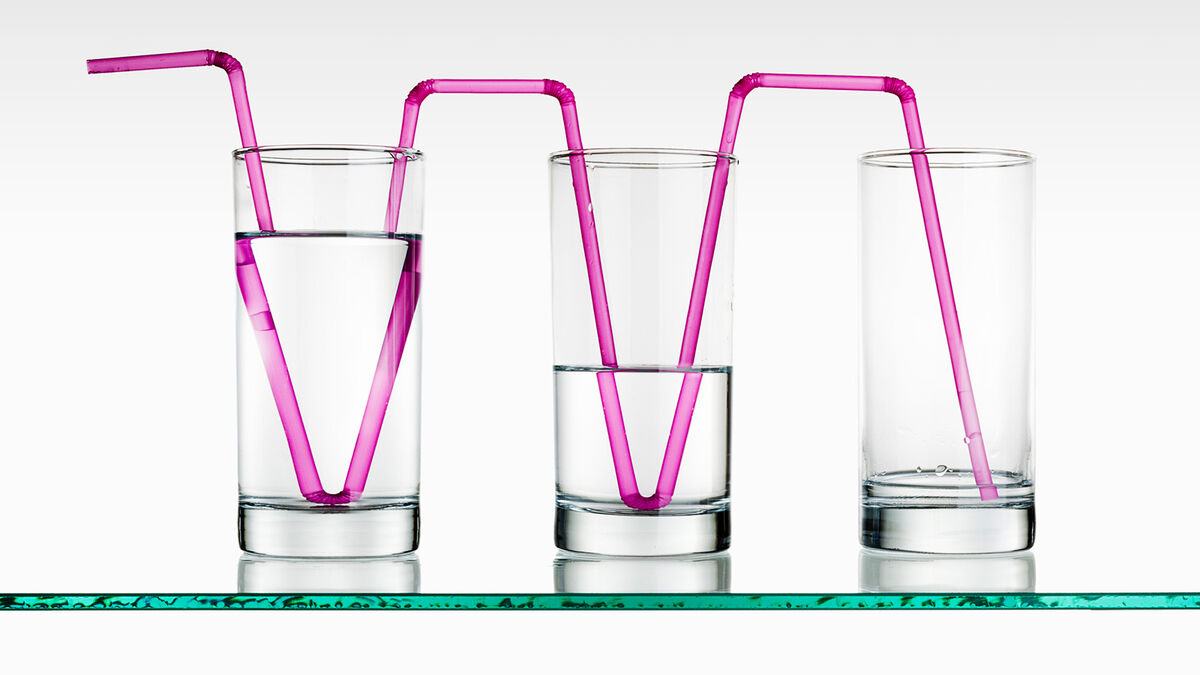
Light moves at certain speeds. However, when the speed changes, it causes the light to bend. This bend, called refraction, can be seen in everyday life. Explore refraction examples from your home to the world around you.
Refraction Examples
Light hits everything. Some substances let it move at a constant speed, but others slow it down. When light slows, it bends; therefore, objects might appear bent, closer, or larger than they really are.
One of the best examples of this is when a pencil is put in a half-filled glass of water. Notice how the pencil above the water looks normal, but under the water, it looks bent and slightly larger. This is because of refraction.
Explore other interesting refraction examples.
Glasses or Contacts
You might not realize it, but if you wear glasses or contact lenses, this is light refraction at play. The lenses of glasses or contacts are made of a plastic that purposely bends light specific ways. This is used to improve vision. For example, bifocals use a convex lens to bend light to make things look bigger.
Human Eyes
Human eyes have a lens. Bigger shocker, right? Well, the lens, or cornea, works to refract light onto the retina. The image is then sent through your optic nerve to the brain. Without refraction, you wouldn’t be able to see.
Prism
Have you ever played with a crystal or any other type of prism? Not only are they interesting, but they create fun rainbows. Why rainbows? Light not only bends when it moves through a surface that slows it down, but it moves at different speeds. The different colors of purple vs. yellow mean that when white sunlight hits the prism, it slows down and bends. However, each different color slows down differently creating fun rainbows.
Pickle Jar
Ever grabbed a jar of pickles with some delicious looking large pickles only to pull them out and feel quite disappointed? They looked so much bigger in the juice in the jar. Since refraction can make things look larger, the pickles are actually smaller than they might appear. This is due not only to the glass, but the liquid inside. Give this a try yourself by having a family member stand in front of the empty jar of pickle juice. Their distorted faces will look much bigger.
Ice Crystals
As you can imagine by now, refraction on ice crystals can have a fun prism effect. However, when refraction happens in a cloud with hexagonal ice crystals, a unique effect called sun dog is created. The halo is what creates the illusion of multiple suns.

Glass
Glass is a perfect everyday example of light refraction. Looking through a glass jar will make an object look smaller and slightly lifted. If a slab of glass is placed over a document or piece of paper, then the words will look closer to the surface because of the different angle the light is bending. Depending on the glass you look through, you can see all different types of effects.
Twinkling Stars
The air in the atmosphere isn’t all the same. Some areas are thicker, and some areas are thinner. Therefore, when you go out at night and look at the stars, they appear to twinkle. This twinkling happens as light refracts as it passes through the different layers of the atmosphere.
Microscope or Telescope
The lens of a telescope or microscope uses a refraction of light to make things look closer than they really are. The lenses of the telescope and microscope are curved in such a way that they magnify small objects or those far away so the human eye can see them.
Camera
Ever wondered how cameras capture a moment? By now you might have guessed, but they use refraction. When you click the shutter, an image is refracted on to a light-sensitive surface, giving a snapshot of your birthday party. Manipulating refraction and the speed of light creates some very interesting shots.
Fish Bowl
If you have an aquarium or fish bowl at home, you might notice the fish look bigger when you look through the side. However, if you put your hand on the opposite side of the bowl, it also looks bigger. Due to the way light refracts through the glass and water, a unique effect of looking slightly lifted and bigger happens. Try it at home!
Indexes of Refraction
When light passes from a faster medium such as air to a slower medium like water, it changes speed at a specific rate. The degree to which light bends will depend on how much it is slowed down. Therefore, different surfaces will have different refraction rates. For example, the index of refraction for water is 1.333 and a diamond is 2.417. This is calculated using the equation c = n/v. In the equation, c is the index of refraction, n is the velocity of light in a vacuum, and v is the velocity of light in the medium.
Refraction Is Fun!
You can find examples of refraction all around your home, especially now that you know what you’re looking for. You might see refraction in the way the light comes through your window or notice the way it changes the appearance of your body in bathwater. Keep your love of science going by exploring archaebacteria examples or chemical properties.